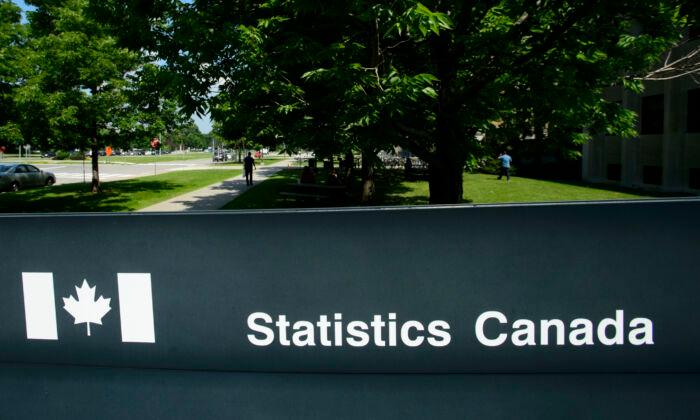The economy grew at an annualized rate of 3.1 percent in the first quarter, helped by business investment and household spending, Statistics Canada said Tuesday.
The result was down from an annualized rate of 6.6 percent in the fourth quarter of 2021.
Statistics Canada said the change came as export volumes dropped 2.4 percent for the quarter, following two consecutive quarterly increases.
Paul Ashworth, chief North American economist at Capital Economics, said the growth for the first three months of the year was well below the consensus estimate, but broadly in line with the Bank of Canada’s April monetary policy report.
“The unexpected weakness in first-quarter GDP growth was principally due to a downward revision to the January data, which now shows a 0.2 percent month over month decline, as the Omicron-related restrictions had a bigger impact than previously thought,” Ashworth wrote in a report.
However, he said the real economy remains on a strong footing, which means the Bank of Canada can press ahead with raising its key interest rate by half a percentage point on Wednesday.
Statistics Canada said household spending rose 0.8 percent in the first quarter, to mark a third consecutive quarterly increase.
Spending on durable goods gained 2.6 percent in the first quarter, helped by a 16.1 percent increase in spending on new passenger cars and a 3.5 percent gain for new trucks, vans and sport utility vehicles.
However, Statistics Canada noted that despite the increases, spending on automobiles remained lower than pre-pandemic levels, as supply chain issues continued to hurt the auto sector.
Residential construction gained 4.3 percent as spending on renovations rose 9.3 percent, resale costs gained 4.6 percent and new construction rose 0.2 percent.
Business investment in non-residential structures rose 2.9 percent and in machinery and equipment gained 0.9 percent in the quarter, while spending on engineering structures rose 3.5 percent.
Statistics Canada also said compensation of employees rose 3.8 percent on a nominal basis for the quarter. Excluding the third quarter of 2020, it said it was the largest quarterly increase since the second quarter of 1981.
The agency said significant wage growth was seen across the economy, including in professional and personal services, trade, manufacturing, health care and social assistance and construction industries.
The overall growth for the first quarter came as the economy grew 0.7 percent in March.
Statistics Canada said its preliminary reading for April indicates the economy grew 0.2 percent for the month, but cautioned the figure would be revised when it releases its official figure on June 30.
The reading on the economy comes ahead of the Bank of Canada interest rate announcement on Wednesday.
The central bank is expected by economists to raise its key interest rate target by half a percentage point to 1.5 percent in an effort to slow inflation.
In its April monetary policy report, the Bank of Canada had forecast an annualized growth rate of 3.0 percent for the first quarter.





